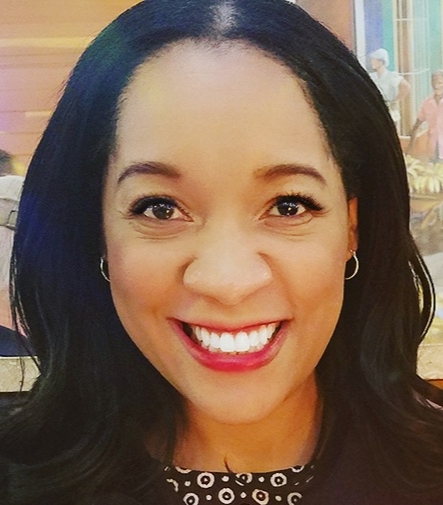Trump Targets Student Loan Forgiveness: Here’s How Taxes and Repayment Could Soon Change
The so-called "big beautiful bill" and the Trump administration’s executive action are making the future of student loan forgiveness and its tax consequences uncertain.


More than 43 million Americans carry student loan debt, and recent grads aren't the only ones feeling the pinch. Data show that many borrowers are in their 40s, 50s, and even 60s, still paying off their own loans or shouldering education debt for their children.
Now, under Trump’s sweeping tax plan — known by some as the “big beautiful bill” — student loan forgiveness, repayment rules, and related taxes are in the news again.
Not long ago, the Trump administration began moving forward with new proposed rules for the Public Service Loan Forgiveness (PSLF) program. Those rules would essentially bar organizations from qualifying that are involved in activities deemed to have a “substantial illegal purpose.”
From just $107.88 $24.99 for Kiplinger Personal Finance
Become a smarter, better informed investor. Subscribe from just $107.88 $24.99, plus get up to 4 Special Issues

Sign up for Kiplinger’s Free Newsletters
Profit and prosper with the best of expert advice on investing, taxes, retirement, personal finance and more - straight to your e-mail.
Profit and prosper with the best of expert advice - straight to your e-mail.
The administration says these include illegal immigration, terrorism, or specific medical treatments for minors.
The changes would give the Education Secretary, Linda McMahon, broad discretion to decide which employers no longer qualify for the PSLF program. That could, potentially, force many borrowers to find new jobs or lose their chance at forgiveness.
PSLF, established in 2007, was designed to encourage public service by forgiving federal student loans for borrowers who make 10 years of qualifying payments while working full-time for government or nonprofit employers.
In an executive order calling for program changes, the Trump administration wrote: “Instead of alleviating worker shortages in necessary occupations, the PSLF Program has misdirected tax dollars into activist organizations that not only fail to serve the public interest but actually harm our national security and American values, sometimes through criminal means.”
These proposed sweeping changes are raising questions and concerns about the future of federal student loans and forgiveness. Here’s more of what you need to know.
Student loans forgiveness eligibility: What’s happening?
The Trump administration’s March executive order and new Department of Education rules, if implemented as proposed, will significantly impact PSLF eligibility.
As mentioned, the rules would allow the Department to disqualify organizations from PSLF eligibility if the Trump administration determines that they have a “substantial illegal purpose,” like violations of federal immigration law or anti-discrimination statutes.
Advocacy groups warn that these changes could be used to exclude supposedly controversial nonprofits, depending on how the rules are enforced.
For example, the nonprofit Institute for College Access & Success told Newsweek in a statement that it urges "the Department to reverse course and ensure that PSLF eligibility is never subject to a political judgment by the Executive Branch alone."
In contrast, during President Biden’s term, the Department of Education worked to expand PSLF.
- For example, the administration introduced a temporary waiver that relaxed some strict program requirements, allowing borrowers to count previously ineligible payments and a broader range of public service jobs toward forgiveness.
- Administrative fixes also addressed long-standing issues, like miscounted qualifying payments and forbearance errors, which had prevented many from receiving relief.
- Data show those efforts led to an increase in approvals: more than 1 million borrowers reportedly received PSLF forgiveness under Biden, compared to just 7,000 who qualified before his administration.
At the time, the Biden administration framed the changes as a way to fulfill the original intent of PSLF and offer relief to teachers, nurses, and other public service workers.
Meanwhile, recent reports suggest the Trump administration’s Department of Education, which he has called for eliminating, has halted the tracking and updating of qualifying payment counts for PSLF borrowers.
Borrowers have reported being unable to see updated progress toward forgiveness in their accounts, and new payment counts seem not to be being processed or displayed.
The reason for the disruption is unclear.
Student loan repayment, borrowing limits, and garnishment changes
Adding to the situation, Trump’s so-called big beautiful bill, enacted July 4, 2025, also brings major changes to repayment options and borrowing limits.
- Starting in July 2026, new borrowers will have only two main federal repayment options: a Standard Repayment Plan with fixed payments and a Repayment Assistance Plan (RAP), which ties payments to income but requires up to 30 years of payments before forgiveness.
- Existing income-driven plans will be phased out, and borrowers will need to transition to the new system in 2028.
- Graduate and professional students face new borrowing caps — a $ 100,000-lifetime maximum for many graduate students — and the Grad PLUS program, which allowed borrowing up to the full cost of attendance, is slated for elimination.
Update: In late July, the Department of Education indicated that the Repayment Assistance Program (RAP) will allow for Public Service Loan Forgiveness after ten years of qualifying payments for those workers in public service or nonprofit sectors. That program wouldn't begin until January 1, 2026.
Still, the various changes could push more students toward private loans, which lack federal protections and flexible repayment options.
It's worth noting that despite the sweeping changes, the federal tax deduction for student loan interest remains in place.
Borrowers can still deduct up to $2,500 in student loan interest paid each year, subject to income limits.
But Congress didn’t increase the deduction in the new legislation, even as repayment terms grow longer and forgiveness becomes harder to access.
Also, the Trump tax bill still allows employers to offer up to $5,250 a year in tax-free student loan repayment assistance.
Meanwhile, the Trump administration has signaled a willingness to resume and potentially expand wage garnishment for borrowers who default on their federal student loans.
As a result, borrowers could again see their wages, tax refunds, or Social Security benefits garnished to repay federal student debt.
Interest restart on SAVE program for student loans
Just recently, the Trump administration announced that as of August 1, 2025, interest would resume on federal student loans for nearly 8 million borrowers enrolled in the SAVE plan.
This follows a federal court injunction blocking the SAVE program, with the Department of Education estimating borrowers could see an average of $3,500 in additional annual costs.
In an official press release, Secretary McMahon stated the following:
“For years, the Biden Administration used so-called ‘loan forgiveness’ promises to win votes, but federal courts repeatedly ruled that those actions were unlawful. Since day one of the Trump Administration, we’ve focused on strengthening the student loan portfolio and simplifying repayment to better serve borrowers.”
Student loan forgiveness and taxes?
There's more. A key tax angle is notable now because, while the pandemic-era American Rescue Plan Act (ARPA) excluded forgiven student loan amounts from federal taxable income through 2025, the Trump/GOP tax and spending bill doesn't extend that exclusion.
That means, unless Congress acts, student loan debt forgiven after December 31, 2025, will once again be considered taxable income at the federal level.
That could leave borrowers who were counting on PSLF or other forgiveness programs facing an unexpected tax bill.
Though, as mentioned, under the Trump administration's proposed changes, the number of borrowers who benefit from loan forgiveness could shrink.
Note: While most states have followed federal law regarding taxes on forgiven student debt, some already tax forgiven student debt. More might opt to do so if the federal exemption lapses.
Trump student loans changes: What borrowers can do
With the student loan landscape shifting, here are some practical steps you can take.
Review your repayment plan: If you’re in an income-driven plan, check how and when you’ll need to transition to a new plan under the new Trump tax law.
Understand your state tax liability: Check whether your state will tax forgiven student debt, and plan accordingly.
Monitor communications: Read updates from your loan servicer, the Department of Education, and advocacy groups.
Seek guidance: Consult with a tax advisor or financial planner to prepare for possible tax liabilities or garnishment if you’re at risk of default.
Related
This story has been updated to include new information about the RAP program.
Profit and prosper with the best of Kiplinger's advice on investing, taxes, retirement, personal finance and much more. Delivered daily. Enter your email in the box and click Sign Me Up.

Kelley R. Taylor is the senior tax editor at Kiplinger.com, where she breaks down federal and state tax rules and news to help readers navigate their finances with confidence. A corporate attorney and business journalist with more than 20 years of experience, Kelley has covered issues ranging from partnerships, carried interest, compensation and benefits, and tax‑exempt organizations to RMDs, capital gains taxes, and income tax brackets. Her award‑winning work has been featured in numerous national and specialty publications.
-
 The Best Vanguard Bond Funds to Buy
The Best Vanguard Bond Funds to BuyInvestors seeking the best Vanguard bond funds can pick between mutual funds and ETFs spanning maturities, credit qualities, tax treatment and geographies.
-
 Are You Afraid of an IRS Audit? 8 Ways to Beat Tax Audit Anxiety
Are You Afraid of an IRS Audit? 8 Ways to Beat Tax Audit AnxietyTax Season Tax audit anxiety is like a wild beast. Here’s how you can help tame it.
-
 The Kiplinger Letter's 10 Forecasts for 2026
The Kiplinger Letter's 10 Forecasts for 2026The Kiplinger Letter Here are some of the biggest events and trends in economics, politics and tech that will shape the new year.